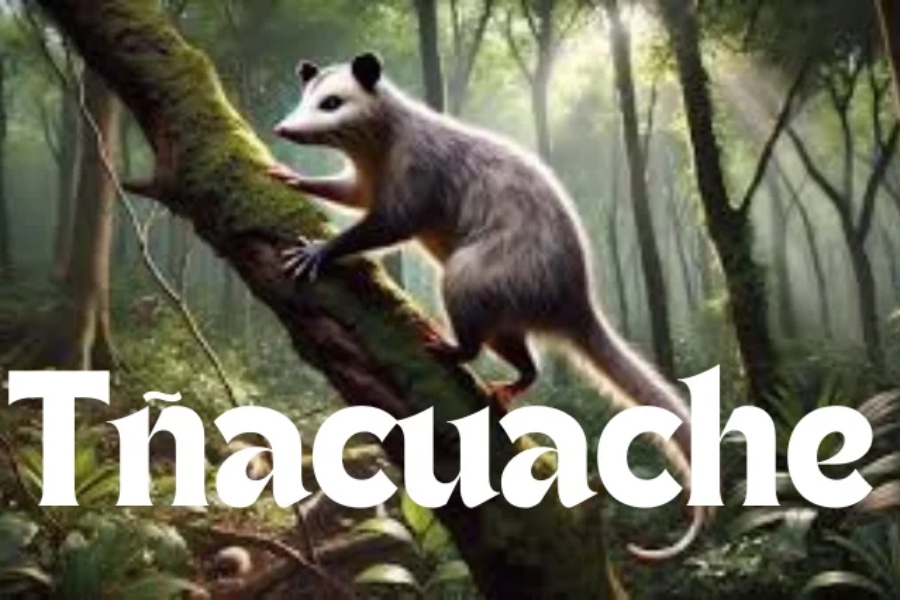Tñacuache: The Resilient Marsupial Shaping Ecosystems and Folklore
Introduction
The tñacuache, regularly known as the opossum or possum, is a intriguing animal that has charmed individuals over diverse societies for centuries. Local to the Americas, this marsupial has a interesting put in the creature kingdom, having a place to the Didelphidae family, which incorporates over one hundred species.
In the Joined together States, the tñacuache is regularly recognized for its nighttime propensities, unmistakable appearance, and part in the biological system. This article will investigate everything you require to know almost the tñacuache, from its science and behavior to its social centrality and how it benefits the environment.
Whether you’re a natural life devotee, a inquisitive property holder, or somebody looking to get it this animal superior, this comprehensive direct will give experiences past what’s as of now accessible. We point to humanize the tñacuache, making it simple to get it and appreciate this regularly misjudged animal.
What is a tñacuache?
The tñacuache, too alluded to as the opossum, has a place to the marsupial family and is local to the Americas. Its logical title is Didelphis virginiana.Not at all like placental warm blooded animals, marsupials bring forward youthful energetic that keep filling in a stash on the mother’s body.. The tñacuache is especially famous for its versatility and genius, which have permitted it to flourish in a assortment of environments.
Understanding the Tñacuache: What Precisely Is It?
The Tñacuache: A Closer See at Its Identity
The Tñacuache is frequently confounded with other little warm blooded animals, but it is a unmistakable species known deductively as Didelphis virginiana. This animal has a place to the marsupial family, which makes it a removed relative of the kangaroo and the koala. Not at all like its Australian cousins, the Tñacuache is local to the Americas, particularly flourishing in the timberlands, wetlands, and indeed urban ranges over North and Central America.
The Interesting Physical Characteristics of the Tñacuache
A Tñacuache’s physical appearance is very striking. It has a white confront with huge, dark eyes that deliver it an nearly spooky see. Its body is secured with coarse hide that is ordinarily grayish in color, and it has a prehensile tail, which it employments for different purposes, counting climbing and adjust. One of the most curiously highlights of the Tñacuache is its capacity to “play dead” as a defense component, a behavior that we’ll investigate assist in this article.
Where Do Tñacuaches Live?
Tñacuaches can be found in a assortment of places, from thick timberlands to active city regions. They are adaptable and can live in tropical woodlands, mangroves, or indeed close human homes. You might spot them in gardens, parks, or indeed scrounging through rubbish cans in urban settings.
Their capacity to adjust to diverse environments makes a difference them flourish in both wild and urban situations. Tñacuaches are nighttime, so they are most dynamic at night. They make their homes in trees, bushes, or burrows.
Diet and Bolstering Habits
Omnivorous Eat less: tñacuache have a shifted count calories that incorporates natural products, creepy crawlies, little vertebrates, and carrion. This omnivorous slim down is a key calculate in their flexibility to distinctive environments.
Feeding Behavior: They are deft feeders and are known to rummage for nourishment. Their sharp sense of scent makes a difference them find suppers, and their dexterous hands make it simple to handle a wide extend of nourishment items.
Ecological Part: By devouring different sorts of nourishment, tñacuache offer assistance control creepy crawly populaces and help in seed dispersal through their droppings, playing a imperative part in their ecosystems.
How do tñacuaches contribute to supplement cycling?
Tñacuaches play a key part in supplement cycling by expending carrion, or dead creatures. When they eat these breaking down bodies, they offer assistance break them down into littler pieces. This handle returns vital supplements to the soil.
By reusing these supplements, tñacuaches bolster the wellbeing of their environment. Their part in breaking down carrion makes a difference keep up the adjust of environments and contributes to in general soil fertility.
The Behavior of the Tñacuache: Misconstrued or Misrepresented?
The Misguided judgments Almost the Tñacuache
The Tñacuache has regularly been the subject of old stories and myths, especially in provincial ranges. A few individuals see it as a bother, whereas others see it as a terrible sign. In any case, these misguided judgments are distant from the truth. The Tñacuache is really a useful creature that makes a difference control creepy crawly and rat populaces, hence playing a pivotal part in keeping up the adjust of ecosystems.
Tñacuache’s Protective Instruments: Playing Dead and More
One of the most celebrated behaviors of the Tñacuache is its capacity to “play dead,” experimentally known as thanatosis. When debilitated, the Tñacuache will collapse, ended up solid, and discharge a foul-smelling fluid from its butt-centric organs, mimicking passing. This act discourages predators, who frequently lose intrigued in what they accept to be a dead, and hence unpalatable, creature. This behavior is automatic, associated to blacking out, and can final anyplace from a few minutes to a few hours.
The Life Cycle of the Tñacuache: From Birth to Adulthood
Reproduction: How Tñacuaches Raise Their Young
The regenerative cycle of the Tñacuache is intriguing. Female Tñacuaches have a brief incubation period of around 12 to 14 days, after which they provide birth to a litter of little, immature sibling. These newborns at that point slither into the mother’s pocket, where they proceed to create for a few weeks.
Growing Up: From Adolescent to Grown-up Tñacuache
As the youthful Tñacuaches develop, they inevitably exceed the pocket and start to ride on their mother’s back. Amid this time, they learn basic survival aptitudes, such as finding nourishment and maintaining a strategic distance from predators. Once they reach autonomy, ordinarily around four to five months of age, they wander out on their possess to set up their territories.
The Tñacuache in Culture and Folklore
The tñacuache has a wealthy history in different societies, especially in Mexico and Central America, where it is frequently included in old stories and mythology.
Mythological Significance
In Mesoamerican mythology, the tñacuache is considered a cheat figure. One well known story tells of how the tñacuache brought fire to humankind. Agreeing to the legend, the tñacuache stole fire from the divine beings by stowing away a burning coal in its tail. This story clarifies why the tñacuache’s tail is smooth, as it was burned by the fire.
Symbolism
The tñacuache is frequently seen as a image of survival and versatility due to its capacity to flourish in different situations and its one of a kind defense component of playing dead. In a few societies, the tñacuache is moreover related with richness and renewal.
Modern Social References
In advanced times, the tñacuache proceeds to be a subject of intrigued in prevalent culture. It has showed up in different movies, cartoons, and writing, frequently depicted as a intelligent and ingenious character. The tñacuache’s special appearance and behaviors have made it a favorite among natural life devotees and a prevalent subject for nature documentaries.
Conclusion
The tñacuache, too known as the opossum, is a surprising animal that frequently goes misconstrued. As a marsupial local to the Americas, it plays an critical part in keeping up biological adjust through its bolstering propensities and flexibility. By controlling creepy crawly populaces, rummaging carrion, and scattering seeds, tñacuaches contribute to supplement cycling and the in general wellbeing of their environment. In spite of the myths and misinterpretations encompassing them, these nighttime creatures are a profitable portion of the environment. Understanding the science, behavior, and social importance of the tñacuache makes a difference us appreciate its versatility and adaptability.
FAQs
1. What is a tñacuache?
A tñacuache, commonly known as an opossum, is a marsupial local to the Americas. It has a place to the Didelphidae family and is known for its flexibility, nighttime propensities, and special defense instrument of playing dead.
2. Where do tñacuaches live?
Tñacuaches are profoundly versatile and can live in a assortment of situations, counting timberlands, wetlands, urban zones, and indeed close human residences. They are most dynamic at night and frequently make their homes in trees, bushes, or burrows.
3. What do tñacuaches eat?
Tñacuaches are omnivores with a different eat less that incorporates natural products, creepy crawlies, little vertebrates, and carrion. Their capacity to eat a wide extend of nourishment makes a difference them flourish in different habitats.
4. How do tñacuaches offer assistance the environment?
Tñacuaches play a significant part in the biological system by controlling creepy crawly populaces, rummaging carrion, and scattering seeds. Their bolstering propensities back supplement cycling and contribute to keeping up the adjust of their environment.
5. Why do tñacuaches “play dead”?
When undermined, tñacuaches show a defense instrument known as thanatosis, where they automatically collapse, gotten to be hardened, and radiate a foul odor to prevent predators. This behavior is regularly mixed up for passing and can final for minutes to hours.
6. Are tñacuaches hurtful to humans?
Tñacuaches are by and large not destructive to people. Whereas they may be seen as bothers in urban zones, they are non-aggressive and favor to maintain a strategic distance from showdown. In reality, their nearness can be advantageous due to their part in controlling bugs like creepy crawlies and rodents.
7. What social centrality do tñacuaches have?
In Mesoamerican fables, the tñacuache is frequently depicted as a cheat figure and is related with the myth of bringing fire to humankind. It is moreover seen as a image of survival, flexibility, and richness in different cultures.
8. How long do tñacuaches live?
In the wild, tñacuaches have a generally brief life expectancy, more often than not between two to four a long time, due to predation and natural challenges. Be that as it may, in imprisonment, they can live longer, up to around five a long time.
Stay in the know with the latest news and updates on Thrill Rise





